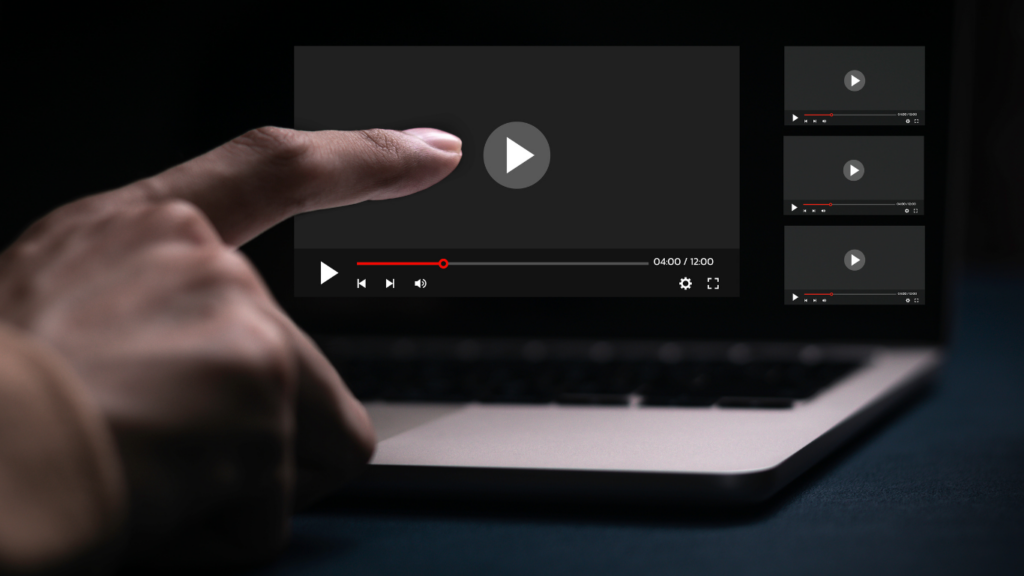The Evolution of Video Marketing
Video marketing has evolved rapidly over the past decade. Initially, businesses focused on creating commercial ads for television. Today, the landscape has diversified with multiple platforms like YouTube, TikTok, and Instagram leading the charge.
- Early Days: Video marketing started with television ads. Brands aimed for mass reach and high production quality. Cost was a limiting factor, making video ads accessible primarily to larger companies.
- The YouTube Revolution: When YouTube launched in 2005, it democratized video content creation. Smaller businesses and individuals gained a platform to reach global audiences. Content variety increased, including tutorials, reviews, vlogs, and more.
- Social Media Integration: Platforms like Facebook and Instagram began integrating video features. Stories and live streaming have made video content more engaging and immediate. Brands leverage these tools to connect with followers in real-time.
- Mobile Optimization: With smartphone usage soaring, optimizing video content for mobile devices has become crucial. Vertical videos and shorter formats (15-60 seconds) have seen a rise, catering to the on-the-go consumption habits of users.
- Data-Driven Strategies: Video marketing strategies now rely heavily on data analytics. Platforms provide insights into view counts, watch time, and engagement rates, allowing for more targeted and effective campaigns.
- Interactive and Shoppable Videos: Innovations like interactive and shoppable videos have emerged. Viewers can engage directly with the content, exploring products and purchasing without leaving the video platform.
The rapid evolution of video marketing highlights its expanding role. As digital landscapes continue to change, businesses must adapt video strategies to stay competitive.
Current Trends in Video Marketing
Video marketing has seen significant shifts in recent years, driven by technological advancements and changing consumer behaviors. Below, I explore several key trends shaping this dynamic field.
Social Media Platforms
Social media platforms are central to modern video marketing strategies. Instagram, TikTok, and YouTube dominate the landscape with their visually-driven interfaces. Instagram Stories, launched in 2016, enable brands to create short-lived, engaging content. Similarly, TikTok’s rise in popularity stems from its short-form video format, which appeals to younger audiences. YouTube, the pioneer in video content, continues to be a crucial platform for long-form video marketing, offering brands diverse opportunities for engagement. By leveraging these platforms, brands can maximize visibility and interact with a broader, more diverse audience.
Live Streaming
Live streaming has gained traction as a powerful tool for real-time engagement. Platforms like Facebook Live, Instagram Live, and Twitch offer brands the ability to connect with audiences instantly. This format is ideal for product launches, Q&A sessions, and behind-the-scenes content. Live streaming creates a sense of immediacy and authenticity that pre-recorded videos often lack. Brands adopting live streaming as part of their strategy can foster stronger connections with their audience and provide interactive experiences that enhance viewer loyalty.
User-Generated Content
User-generated content (UGC) has become a vital component of successful video marketing campaigns. Encouraging customers to create and share videos featuring their experiences with products or services not only boosts authenticity but also broadens reach. Brands often run contests or campaigns to incentivize UGC submission, harnessing the power of word-of-mouth marketing. When users see genuine content from peers, it builds trust and credibility. Implementing UGC strategies can help brands create a community around their products, driving higher engagement and fostering brand loyalty.
Benefits of Video Marketing
Video marketing offers substantial advantages for businesses striving to make an impact in the digital world. Below, I explore three key benefits that highlight its effectiveness.
Increased Engagement
Videos capture attention more effectively than text or images. According to HubSpot, 54% of consumers want to see more video content from brands they support. Videos, whether tutorials or testimonials, provide immersive experiences that keep viewers engaged longer. Interactive elements, such as clickable links and polls, further enhance engagement.
Improved SEO

Videos can significantly boost search engine rankings. Google prioritizes video content in search results, leading to higher visibility. Pages with videos are 53 times more likely to rank on the first page of Google search results (Insivia). Incorporating relevant keywords in video titles, descriptions, and tags improves SEO. Embedding videos on website pages also increases user time on site, signaling search engines of content value.
Higher Conversion Rates
Videos drive conversions more effectively than other content forms. Including a video on landing pages can increase conversions by 80% (Unbounce). Product demos and explainer videos simplify complex information, helping potential customers make informed decisions. Testimonials build trust, offering social proof that encourages conversions. Aligning video content with the buyer’s journey meets specific needs at different stages, enhancing overall conversion rates.
Challenges in Video Marketing
Despite its advantages, video marketing presents several challenges that marketers must navigate. These obstacles can impact the effectiveness of campaigns if not addressed properly.
Content Saturation
With the rise of video content, platforms are inundated with videos. Standing out in this crowded landscape is difficult. Businesses need unique, high-quality videos to capture attention. Engaging content and a distinctive brand voice are essential to break through the saturation.
Production Costs
Creating high-quality videos can be expensive. Costs include:
- hiring professionals
- using advanced equipment
- post-production editing
For small businesses, this financial burden can be significant. Streamlining the production process and leveraging cost-effective tools are ways to mitigate these expenses.
Measuring ROI
Quantifying the return on investment (ROI) in video marketing remains complex. While engagement metrics like views and shares are available, connecting these to sales or brand loyalty is challenging. Accurate measurement requires integrating analytics tools with sales data to link video performance directly to financial outcomes.
Future of Video Marketing
Video marketing’s future looks exciting as it continually adapts to new technologies and audience preferences. Exploring these advancements reveals immense potential for businesses to enhance engagement and conversion rates.
Augmented and Virtual Reality
Augmented Reality (AR) and Virtual Reality (VR) are transforming video marketing by creating immersive experiences. AR overlays digital elements onto the real world, enhancing user interaction. For example, IKEA uses AR to let customers visualize furniture in their homes. VR, on the other hand, offers fully immersive experiences. One notable example is tourism companies providing virtual tours of destinations. Both technologies capture attention and offer innovative ways to present products and services, making them valuable tools in video marketing.
Personalized Video Content
Personalized video content is gaining traction for its ability to increase engagement. By tailoring videos to individual viewer preferences, businesses see higher retention rates and better connections with their audience. Platforms like Netflix excel at personalized content, suggesting shows based on user behavior. Similarly, brands can use data to create customized video messages, recommend products, or provide personalized experiences, helping to foster loyalty and improve conversion rates.
AI and Automation
Artificial Intelligence (AI) and automation bring efficiency and precision to video marketing. AI analyzes viewer data to optimize video content, identifying what resonates most with the audience. Automated tools streamline video production, enabling quicker turnarounds. Examples include using AI-driven editing software to enhance footage or employing chatbots in live video streams. These technologies not only save time but also help deliver high-quality, relevant content consistently.
Video marketing continues evolving, integrating cutting-edge technologies to stay relevant and effective in engaging audiences.



